When you purchase through links on our website, we may earn a commission. Affiliate disclosure.
NCM e-bikes have expanded their business considerably since I first had a go on one of their bikes back in 2018. They now have a global presence with distribution facilities in North America and Australia. In this review, I will be looking at the NCM Aspen fat tire electric bike, and much like their other models, this one looks like excellent value for money with no compromise on build quality.
Summary
Electric fat bikes continue to be popular, particularly in countries where there are vast areas of sand or harsh winters with heavy snowfall.
One of the last NCM e-bikes I tested was the excellent Moscow, and more recently I managed to have a go on an Aspen, which a friend had imported from Germany. I’ve always been impressed with the value and build quality of these bikes, so I was keen to test it out on the open, boggy moorland not far from where I live.
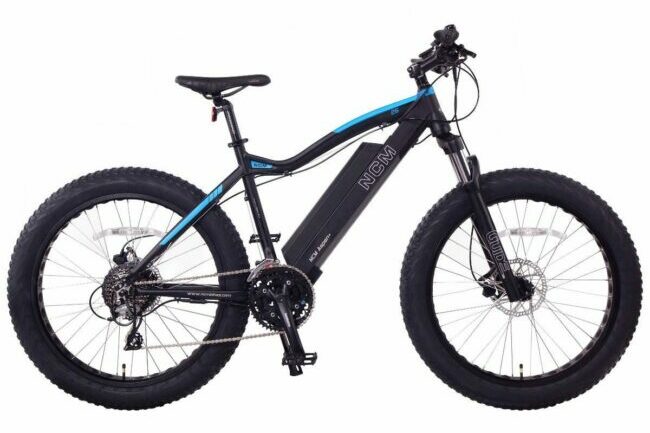
The NCM Aspen uses a powerful Das-Kit 500w geared rear hub motor, combined with a decent 48v 13Ah lithium battery pack. And even though it’s a big, heavy bike, the motor had more than enough power to cope with the very wet and boggy terrain ridden on.
Another thing that impressed me with this bike was its ability to deal with this harsh terrain while still retaining some composure. The 4″ wide tires were run at 10psi and held traction pretty well, even on some of the short, technical climbs.
All in all, I was impressed with what Aspen had to offer for the price. Read on for more details on the specification.
Check my article featuring 11 of the best fat tire electric bikes for 2023
Electric components
Fat bikes are considerably heavier than regular hard-tail mountain bikes, so having a more powerful motor and decent battery is quite important, particularly if you are doing lots of off-road riding. I prefer mid-drives, but these come at a premium, and most factory-produced electric fat bikes seem to use rear hub motors.

Das-Kit Rear hub motor
The Das-Kit rear hub motor is NCM’s in-house brand, and it shares more than a passing resemblance to the 48v Bafang hub motor. I suspect it is re-branded Bafang as it’s very similar in design and feel. The 500w on offer is the nominal output, this motor will peak at over 700w in full-power mode offering plenty of grunt for tackling muddy terrain.
There is also a useful thumb throttle fitted, so if you get tired of pedalling you can take a break. The maximum tested speed of the Aspen was about 22mph. Using the throttle when riding on flat ground should be fine, but I wouldn’t recommend using it for prolonged periods of climbing (without pedalling) as this will put a lot of strain on the motor.
LCD Display
The Das-Kit L7 display is used on a lot of NCM’s e-bikes, and also on some of their conversion kits. It’s a very neat display and although it has fairly limited functionality when compared with other displays, it does the job.
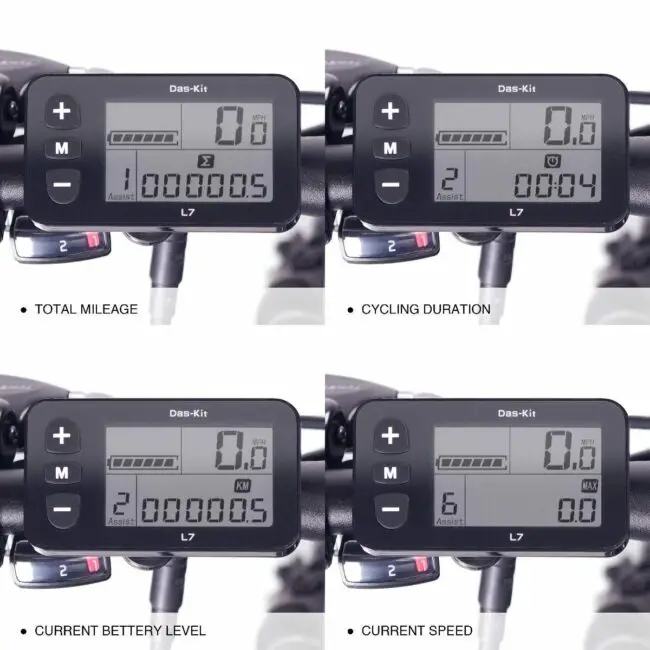
There are up to 6 levels of pedal assist to choose from and the bike I tested was showing speed in kilometres only, I couldn’t find a way to change this, but it’s a minor detail. There is also a trip function.
Battery
There are 2 battery options to choose from with the NCM Aspen. The model tested had a 48v 13Ah (624Wh) although the Aspen Plus has a 768Wh battery (48v 16Ah). The 13Ah battery has a realistic range of between 25-35 miles depending on how much assist you use, and how often you use the throttle.
If you rely heavily on the throttle then the range would be reduced even further. If you are very economical with the e-assist, it’s possible to squeeze 50+ miles out of a single charge.
This is the same DeHawk battery as fitted to the NCM Moscow hardtail electric mountain bike and uses quality Panasonic lithium cells. Spare DeHawk batteries are also available if you need an extra.
Bike components
Most traditional fat bikes have 6061 Alloy or heat-treated ChroMo steel frames. Traditionally, fat bikes had rigid steel forks. This made them very robust and the oversized tires acted like suspension. NCM has opted for an RST entry-level suspension fork, which adds to the comfort, but I think a steel rigid fork would have been better (and lighter). Most fat bikes have 1 x gearing and hydraulic brakes. The version I tested had Tektro mechanical discs, although the NCM Aspen Plus has hydraulics.
Gearing
The Aspen has a Shimano Acera triple front chainring with a 14-28 7-speed freewheel giving a good spread of gears. Front trigger shifters and rear derailleur are cheap but dependable Shimano Altus components.
Most regular fat bikes have a 1 x drivetrain with an 11-42 cassette and 32 or 34t front chainring. Although triples are now considered ‘old hat’ in the case of the Aspen, having the larger front chainring is great for riding at higher speeds on the road or gravel.
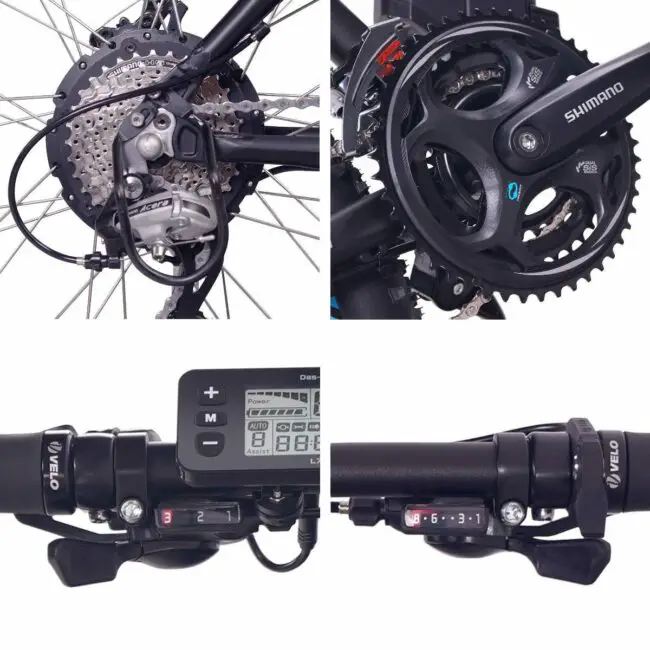
Brakes
This test bike had the Tektro mechanical front disc brakes, and in fairness, they did the job well enough. They lacked the modulation and overall bite offered by hydraulics, but at this price, it would be easy enough to upgrade them to Shimano MT-200s or similar. The Aspen Plus model comes as standard with hydraulic brakes.
Suspension
As I have mentioned above, I don’t feel having suspension forks on a fat bike is necessary. The 80mm travel RST Guide T-26 front forks are fine for moderate riding, but you will find their limit fast (as I did). If it was my bike I would find some good ChroMo steel fat tire forks and ditch the front suspension.
Wheels and Tires
The wheels seem fairly tough, and handled rough muddy terrain without any drama. The CST BFT tires are also pretty good and can be run at a low psi when riding off-road. I didn’t experience any pinch flats even though I was running them at about 10psi.
Frame and finishing kit
As with all their e-bikes, the 6061 alloy frame on the NCM Aspen seems well-made and sturdy. It’s finished in a nice matt metallic grey with blue detailing.
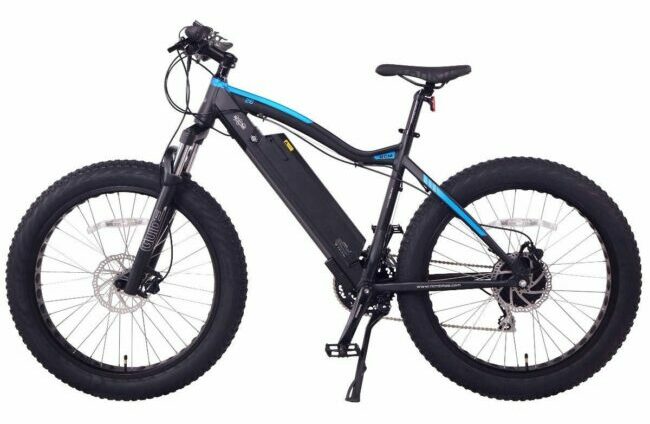
All of the finishing kit, including handlebars, seat post and stem are by Promax, and the saddle is NCM’s design. I found the saddle to be adequately comfortable.
Who is the NCM Aspen aimed at?
The NCM Aspen is aimed at riders who want to explore terrain that’s inaccessible on regular mountain bikes. Fat bikes were originally designed with mud, sand and snow in mind. There’s also an increasing number of riders who like to use these as everyday commuter bikes.
There are quite a few advantages to riding an electric fat bike on the road (and some disadvantages). The main ones are increased durability – riding up kerbs, potholes and even steps can all be done on a fat bike. On the negative side the increased road noise and sheer bulk of the bike, may put some commuters off.
Conclusion
I think NCM’s first attempt at an electric fat bike isn’t too bad at all. The Aspen is a capable enough e-bike and at its price it is a very viable competitor to the likes of the RadRhino by Radpower bikes.
If I was to buy one of these I would go for the Aspen Plus, as you get hydraulic brakes and a more powerful battery. Apart from that, there’s not a lot of difference between the two options.
The bike I tested was great fun to ride and handled wet and muddy terrain with relative ease.
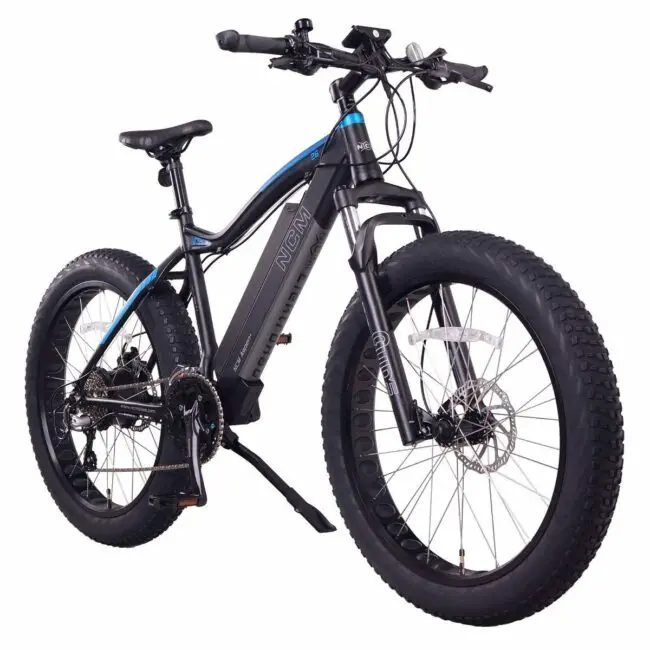
The use of fairly bargain basement components means that if parts do eventually wear out, they are very cheap to replace or even upgrade.
Electric fat bikes can be great fun, and the NCM Aspen certainly offers a reasonable spec for the price but I’m not too sure how the front forks would stand up to constant hard off-road riding. I would err on the side of caution and stay within the limits of this bike.
Apart from my concerns about the front suspension, the rest of the bike is fine. It’s comfortable, handles well and the motor provides plenty of help when needed. The battery range is respectable and it neatly integrates into the frame.
If you’re just after a fat bike for riding on sand or snow and nothing too severe then the Aspen is ideal. If you want something that can handle much rougher treatment, it would be worth buying something like a Kona Wo and getting it converted – read my article on building a DIY electric fat bike.
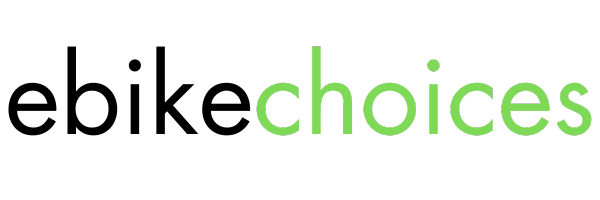

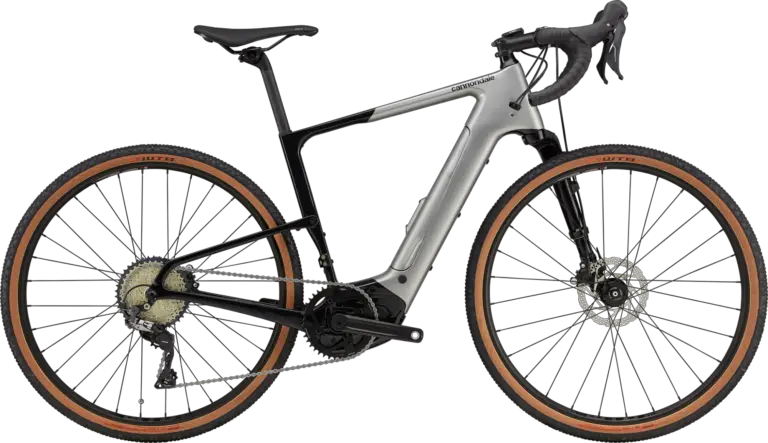
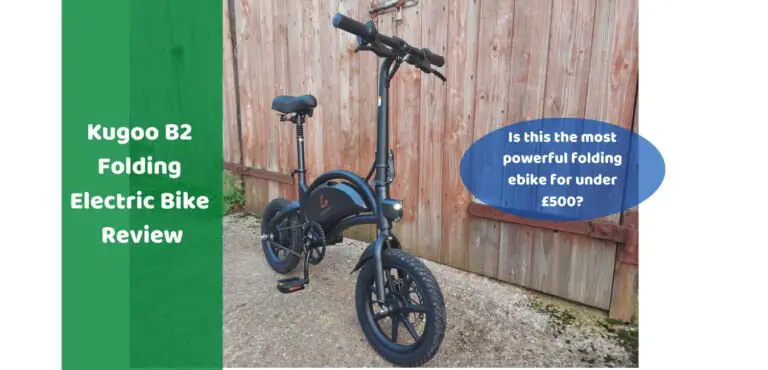
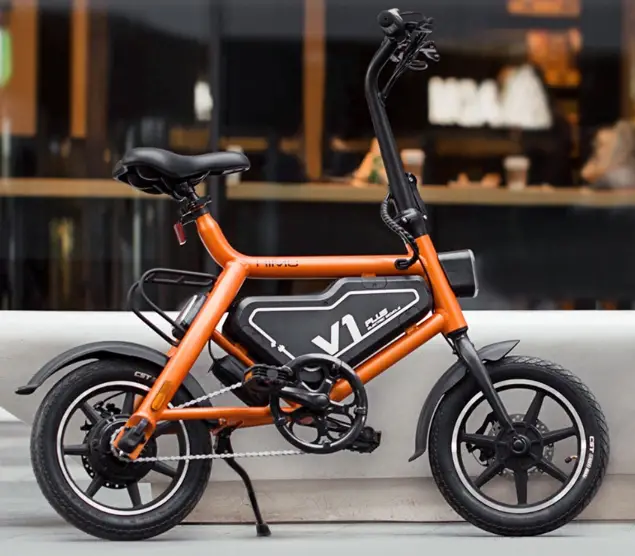
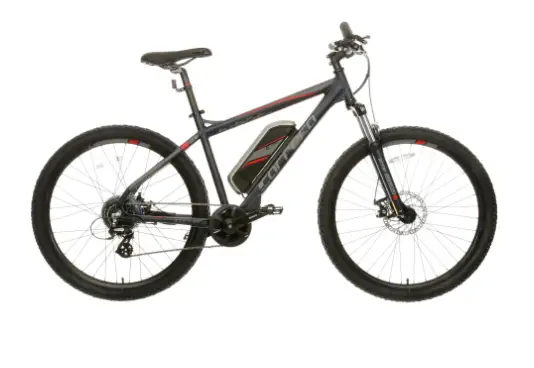
![Carrera Vulcan E Review [2020 Model] 8 Carrera Vulcan E Review [2020 Model]](https://www.ebikechoices.com/wp-content/uploads/2019/11/Carrera-Vulcan-Electric-mountain-bike-review-2020.png)
![Samebike MY-SM26 Electric Bike [Tech Specs and overview] 9 Samebike MY-SM26 Electric Bike [Tech Specs and overview]](https://www.ebikechoices.com/wp-content/uploads/2021/11/Samebike-MY-SM26-Electric-Bike-768x341.png)
Bonjour, je suis très intéressée par la version PLUS de ce vélo, mais il n’est disponible qu’en une taille unique. Il est recommandé de faire entre 160 cm et 185 cm pour ce vélo. Je fais 191 cm, est ce que selon vous ça peut poser un gros problème ?
Je pense éventuellement changer la potence par une potence de 110mm, incliné de 60 degrés vers le haut pour et un peu plus à l’aise
Merci à vous pour le test
Bonjour,
Je recommanderais d’expérimenter avec des tailles de tige. 110 mm avec un angle de 60° est un bon point de départ. Ce serait également une bonne idée d’essayer des guidons surélevés et un poteau plus long et en retrait. Je mesure 185 cm et la tige de selle était réglée au maximum lorsque j’ai testé l’Aspen.
Salutations,
Tony
Hi Tony, thank you for all your informative reviews. I have around £2000 or $2600 to spend on a bike and I love bikes like the
NIREEKA PRIME as it has the bafang ultra motor. At this price point I would love to have your opinion on this bike or any others that you consider value for money. I will primarily be using it to get to work over quite a few hills and occasionally going off road. I just would prefer the additional power and speed that these motors bring as I weigh 16 1/2 stones. Thanks and take care
Hi Jeremy,
I’ve had a look at the Nireeka Prime and it’s certainly different. I managed to find a bit more info on it over at electrek, looks to be a legit company. It boils down to the quality of the CF frame and other components, it seems a lot of bike for the money. The only problem I can see is because of it’s distinctive looks it may get unwanted attention from the Police, seeing as it uses the Bafang M620 motor. You would probably be better off buying a good used fat bike (if you can find one) and fit a Bafang BBSHD mid-drive with a decent 52v battery. Here is a link to my article on building an electric fat bike.
All the best,
Tony
Thank you for your swift reply, I really appreciate it. Upon reflection your comments on unwanted attention has resonated with me. In fact the more I think about it the more I’m inclined to buy a road hybrid or make one, still think something more powerful such as bafang would be good. You have so much wonderful info on your site I’m not sure where to start. I can go to £2500 or even £3k just no sure if to go the buy conversion kit and second hand bike route or buy a bike. I’d value your input.
Hi Jeremy,
I did a Bafang BBSHD conversion for a lad in Bristol last year, and he’s had no bother. It was based on a Giant Roam Hybrid – I think the total cost of the build came to about £2k (including the cost of the new donor bike). The finished product looked like a regular factory e-bike but had bags of power in reserve if needed, you could also set the speed limit. The main problem with the more powerful (ready-built) e-bikes available on the market is they tend to use cheap ancillary components like brakes, suspension and groupset. I’d consider buying a good quiality donor bike like a Giant, Trek, Cannondale or Specialized and fitting a BBSHD and 52v battery – that way you end up with a quality bike with quality components and the reliability (and power) of the Bafang HD motor. You can even buy a USB programming lead and alter the firmware in the motor to suit your riding style.
Feel free to email me at cycletek@outlook.com if you need more info.
Cheers,
Tony